Infection DefinitionDiseases are illnesses that affect the entire body or just a portion of the body by impairing physiological functions. Diseases may develop as a result of infectious or non-infectious factors. In contrast to infectious disorders, which are brought on by microorganisms that cause infection, non-infectious causes are often brought on by internal factors or genetic abnormalities. 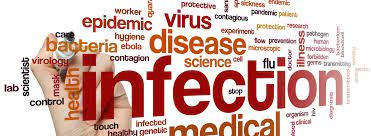
Microbes live inside the human body. They are referred to as probiotic microorganisms. These microorganisms have useful functions that aid digestion, the breakdown of complex nutrients, and immune system regulation. Nonetheless, the infection-causing organism is a threat to human health. For their survival, microbes are dependent on other living things. A host is an organism which a microbe invades and infects. The microorganism can potentially cause the host's death in very severe infections. Examples include COVID-19, HIV, tuberculosis, and smallpox. Years after initially infecting the host, they eventually cause the host's death. Infectious DiseasesThe term "infectious diseases" refers to illnesses brought on by various pathogenic microorganisms, including bacteria, fungi, viruses, protozoa, and other parasites. Animals, individuals, insects, or other agents can all spread these infectious conditions. 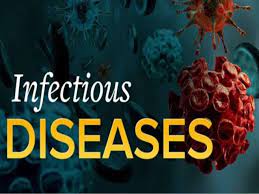
We are surrounded by several types of infectious agents in various sizes and forms. Based on a few similar features, they can be grouped. Some, like bacteria, viruses, and fungi, are single-celled organisms. It is also recognised that other multicellular creatures, like worms, may transmit illness. Difference between Infectious and Non-Infectious DiseasesHarmful organisms like bacteria and viruses that enter your body from outside are what cause infectious disorders. Non-infectious illnesses are brought on by genetics, anatomical variations, ageing, and environmental factors instead of by external organisms. Non-infectious illnesses cannot be acquired by contact with other people, insect bites, or food. 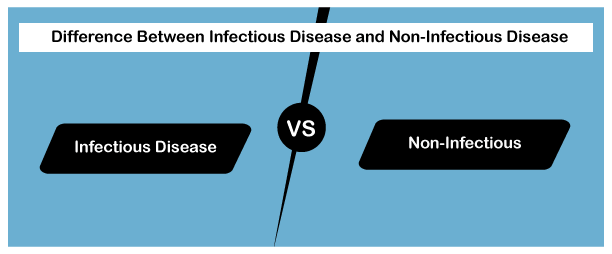
Examples of infectious illnesses include measles, flu, HIV, strep throat, COVID-19, and salmonella. Examples of non-infectious illnesses include cancer, diabetes, congestive cardiac failure, and Alzheimer's disease. Common Infectious DiseasesInfectious diseases are common worldwide, although some are more widespread than others. For example, 1 in 5 Americans encounters the influenza virus yearly, while less than 300 persons have prion diseases. Below is a list of the several types of infectious illnesses that are most common. Common infectious diseases are caused by the following: Viruses
Bacteria
Fungi
Parasites
Types of Infectious Diseases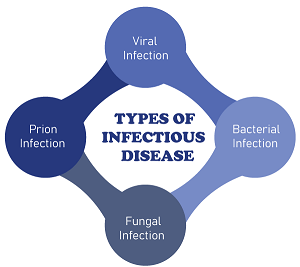
Infectious diseases come in many different types and are brought on by diverse pathogens. The following diseases are listed: 1. Viral InfectionsThere are millions and millions of viruses in existence. They are the primary cause of viral diseases, including the common cold, the flu, and other similar illnesses. When a virus invades a host's body, it attaches to the cell and releases its genetic traits there. The virus grows, and also replicates. More viruses are released through the cell lysis, infecting new cells. A few viruses alter the way that cells operate rather than destroy them. For instance, Human Papillomavirus and Epstein-Barr Virus promote uncontrolled cell division and cause cancer. 2. Bacterial InfectionsBacteria can live in any environment, including radioactive waste, severe cold, and high or low temperatures. There are many different bacterial strains, some of which can be harmful. Bad bacteria bring on diseases while they are prevented from spreading by good bacteria. Bacterial infections can cause infectious illnesses such as cholera, TB, diphtheria, and typhoid. Although some bacteria can be treated with antibiotics, others develop antibiotic resistance and cannot be treated. 3. Fungal InfectionsA fungus uses an enzyme to break down and absorb organic matter. When inhaled, fungus spores have the potential to cause systemic fungal infections. While some spread to the deeper layers of the skin, most fungal infections manifest in the skin's outermost layers. 4. Prion InfectionsA protein without genetic material is called a prion. Creutzfeldt-Jakob disease and other devastating illnesses are brought on by irregular prion folding because they alter the structure of normal proteins. These illnesses are typically fatal and spread quickly. Although they cannot reproduce inside the host, they can cause abnormal behaviour in body cells. 5. Other InfectionsOther organisms that can transmit infectious illnesses include protozoa, helminths, and ectoparasites.
Several Methods of Infection TransmissionThere are several ways that the illness spreads. Both people and animals can be infected with the virus. The mouth, nose, and eyes are possible entry points for the infection. This is a basic description of the typical infection modes. 1. Skin ContactSkin contact is the primary route of infection. The skin may include a variety of infections. The infection may get inside a wound through a cut. Scabies is brought on by skin-dwelling mites that spread through skin-to-skin contact. A person or animal with ringworm gets a fungus that spreads through them. Itching, rash, skin rubbing in the affected region, burning sensations, tingling, and numbness are typical signs of skin contact infections. 2. Transfer through the Bodily FluidsBody fluids, including sweat, sperm, blood, vaginal fluid, and breast milk, can spread some illnesses. For example, if a woman has HIV and does not receive vaccinations, the infection may be transmitted to the child through breast milk.
Also, if the mother doesn't get an HIV vaccination, the illness can transmit to the developing baby in the womb. A healthy individual may get the virus when they contact an infected person's bodily fluid. A person with the virus may cough up the infection, which then spreads through the mucus or used syringes. Unprotected sex is another method for illness transmission. 3. Contact with FaecesFaeces are solid waste products that leave a human or animal's body through the bowels (lower part of the digestive system). A healthy individual can become ill if they touch an infected human or animal waste. The opposite is also possible. When someone uses the toilet and fails to wash their hands properly, the bacteria might enter their mouth and create an illness. Faeces are one way that typhoid spreads. Such contact can spread diseases including adenovirus, cholera, and hepatitis E and A. Ingesting E.Coli (bacteria found in the lower intestine of warm-blooded organisms) also result in infection. It may result in food poisoning. 4. Ingesting Spoiled Food or WaterThe majority of pathogens and microorganisms are consumed through food and drink. The majority of E. coli infections are spread via contaminated food and drink. Salmonella thrives in water and food that has been contaminated. Infection with salmonella most frequently occurs as a result of contaminated water. Vomiting, diarrhoea, a rise in fever, and dehydration are typical signs of eating contaminated food. 5. Inhaling Airborne Contaminants or DropletsMucus droplets frequently include germs and diseases. A person could become infected by the virus if they come contacted with their mucus before touching their face. Animal droplets may also contain certain diseases that can infect people. Flu and the common cold are frequently transferred through droplets. Droplets of the infection are spread to others when an infected individual coughs or sneezes. Colds, flu, mycoplasma, pertussis, plague, strep throat, rubella, and pertussis are frequent diseases that are spread by droplets. Causes of Infection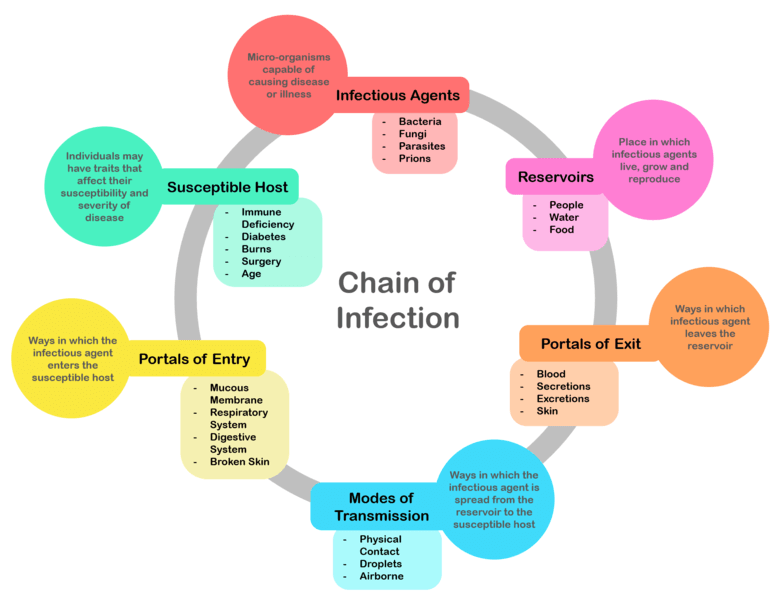
Depending on the organisms or pathogen that attacks humans or animals, different infections have different causes. A person's symptoms of a viral infection might vary, and those of a bacterial infection may not be as severe as those of a virus infection. On the other hand, Clostridium infections are deadly bacterial illnesses. SymptomsDepending on the causing organism and the infection's location, different infections will cause different symptoms.
Transmission of Infectious DiseasesThe following methods are used to propagate infectious diseases:
Prevention of Infectious Diseases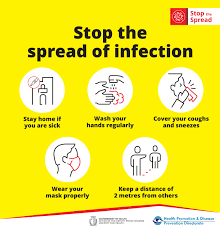
No one approach can be used to stop all infectious illnesses. Nonetheless, to lessen the danger of transmission, people should follow these recommendations:
Next TopicSociety Definition
|
 For Videos Join Our Youtube Channel: Join Now
For Videos Join Our Youtube Channel: Join Now
Feedback
- Send your Feedback to [email protected]
Help Others, Please Share










